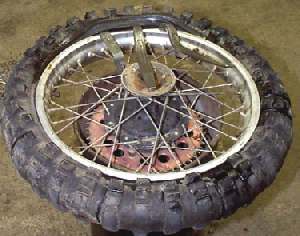First test with cold pressures starting at Fr=34, Rr= 36 yielded only a very slight increase of about 1 psi increase (pressure too high)
Yesterday repeated with cold pressures starting at Fr= 32, Rr= 34. After 32 mile run I got Fr= 33.1 & Rr= 36.2 So front went up about 3.5% and rear about 6.5%
So it's working towards the 10% goal but look where the actual pressures (measured with a calibrated (ACCU_GUAGE shop type dial guage). Just seems my tire pressures to this point are getting a bit lower than most others' reports and by the 10% rule I need to go even lower.
Will continue the testing. Bike feels like it's handling better BUT I just put new set of tires on so it should. Any thinks on this ongoing procedure?
Side questions- All are "just curious" questions so please don't anyone read some sort of criticism here & go on a rant. :-)
1. What is the actual source of this theory? Did it come from emperical testing by site members or some formal scientific study?
2. Does the type of riding affect results? If I rode 30 miles in stop & go slower MPH riding would I get same results as cruising at highway speed?
3. If I did same test in 30 deg weather and then did same test at 90 deg temp would there be much difference?
4. Would carrying a passenger and/or load of gear would the results come out differently?
I rarely carry a passenger but sometimes load up with camping gear. I would try the test next time I am riding under either of those conditions.
Thanks for your help & wisdom.
.png)

Comment